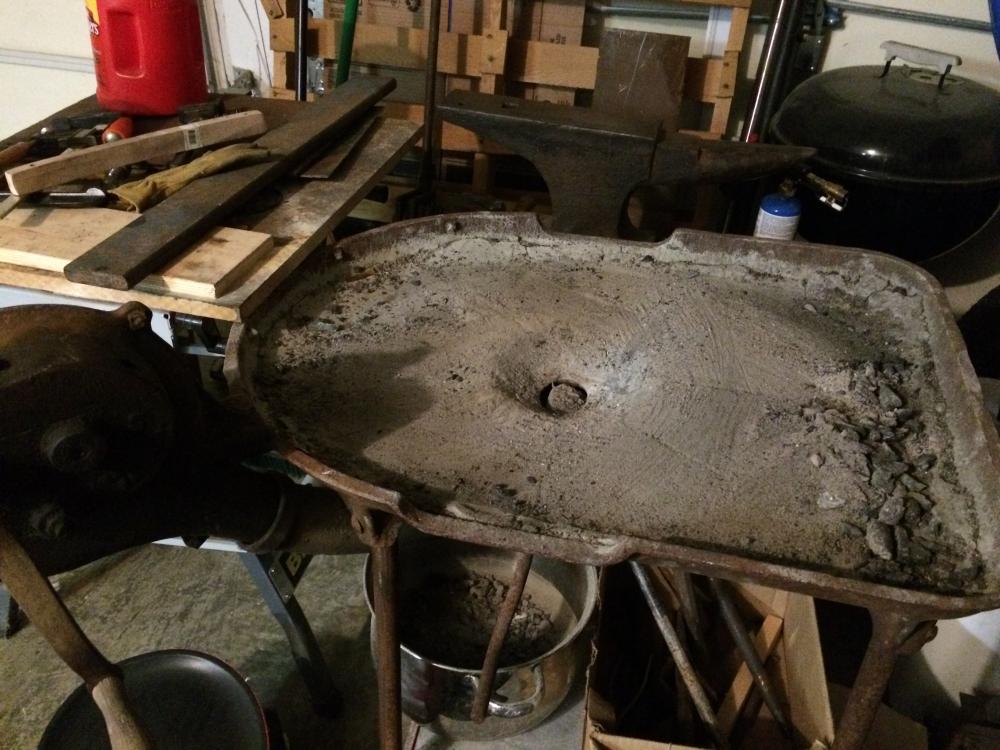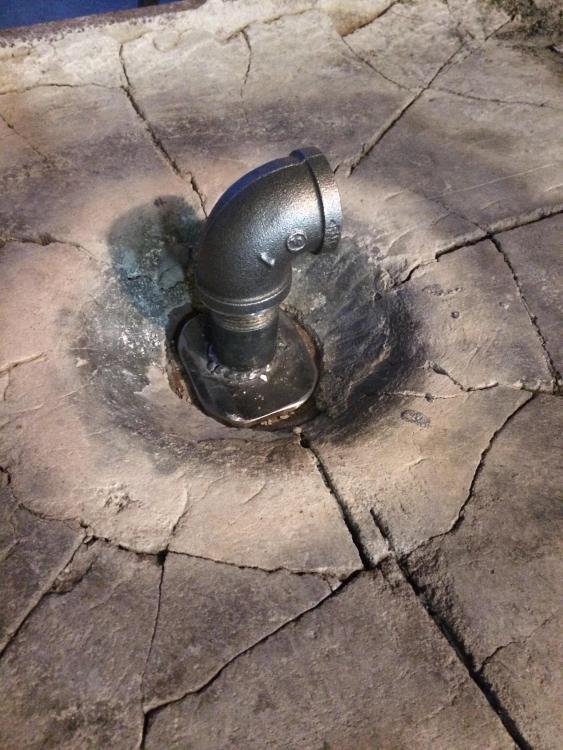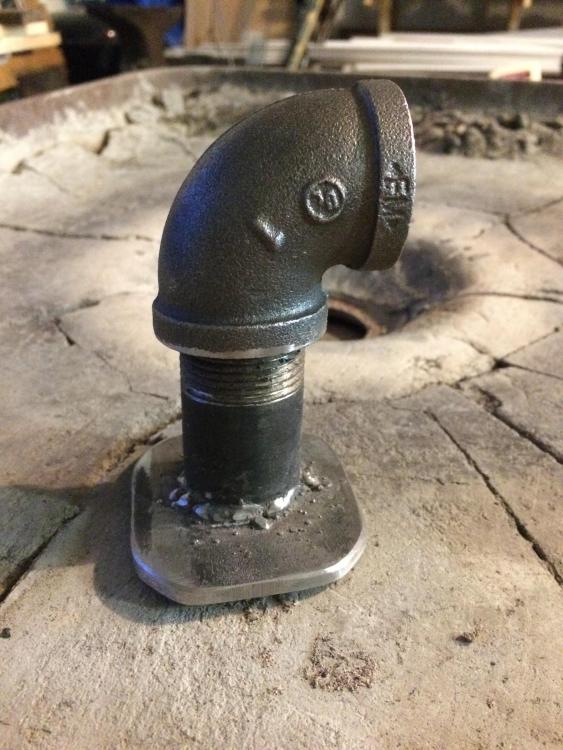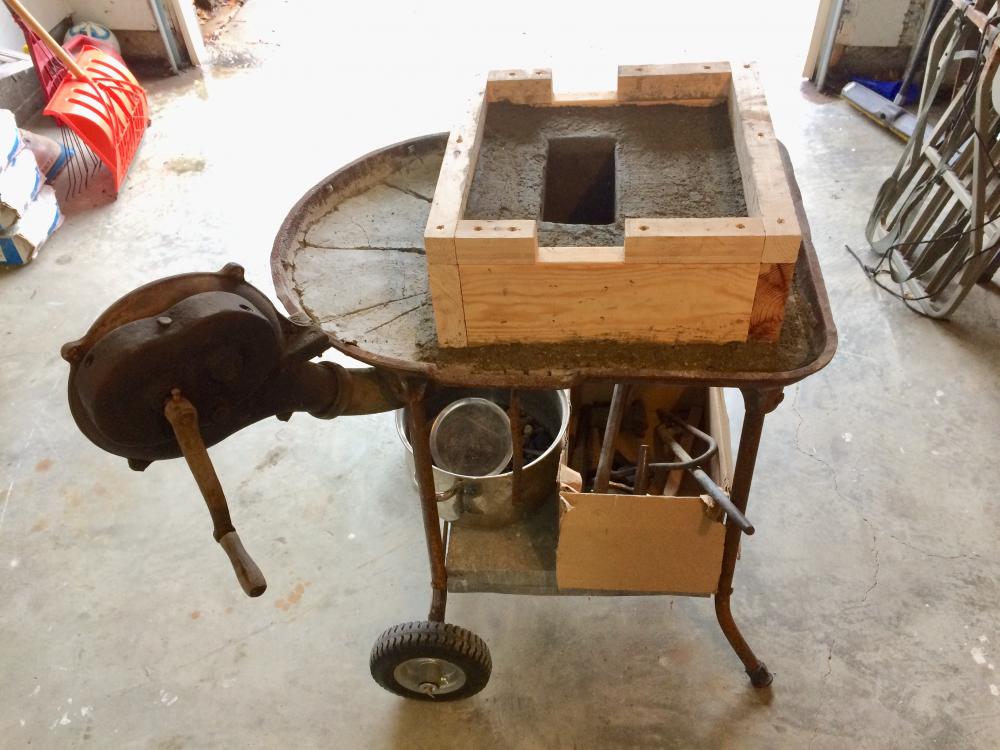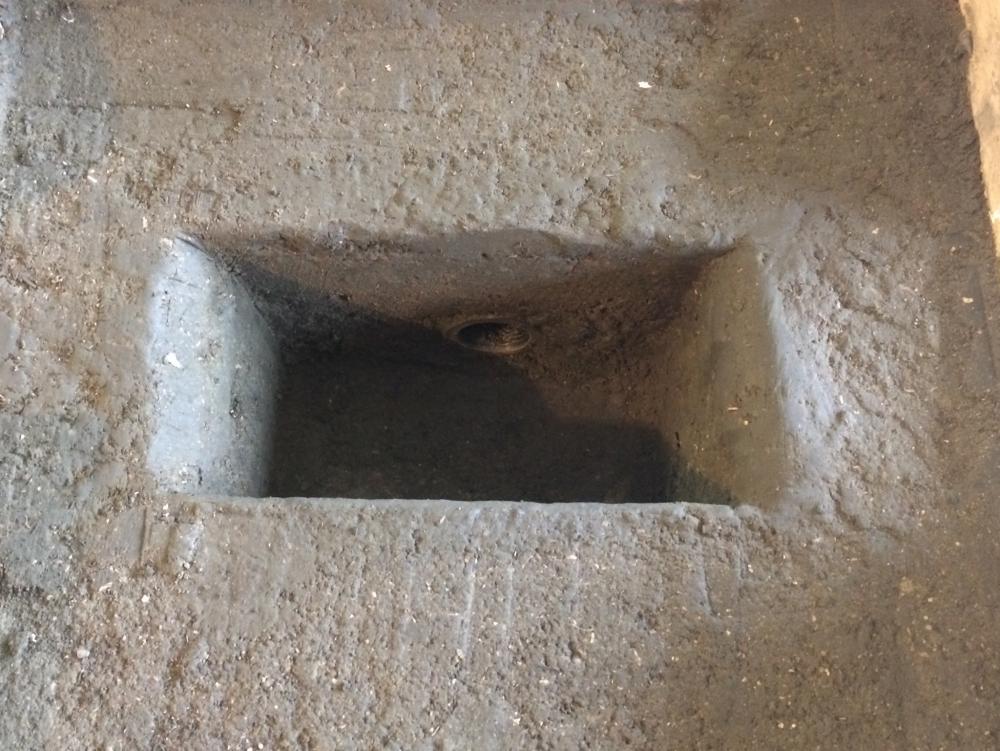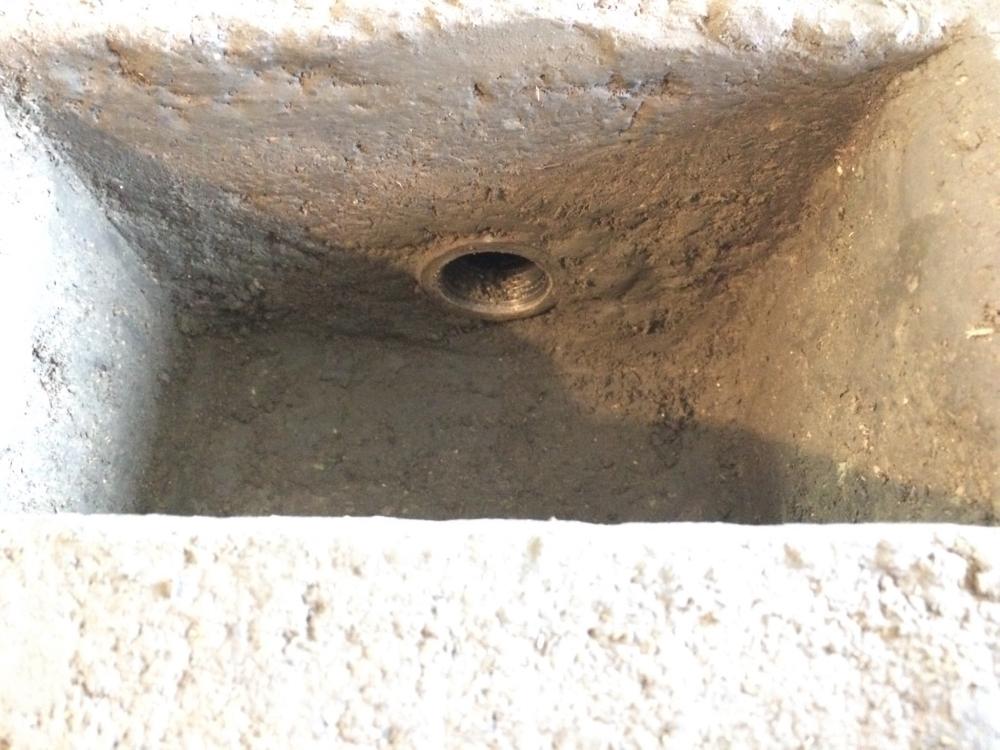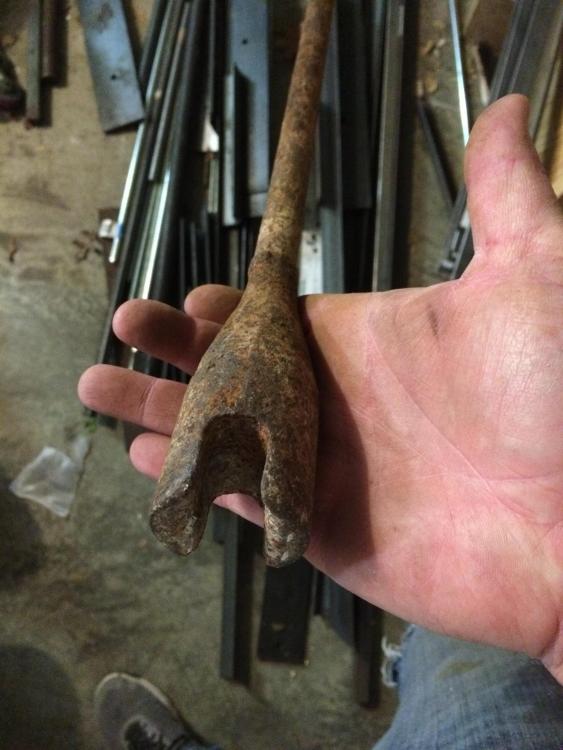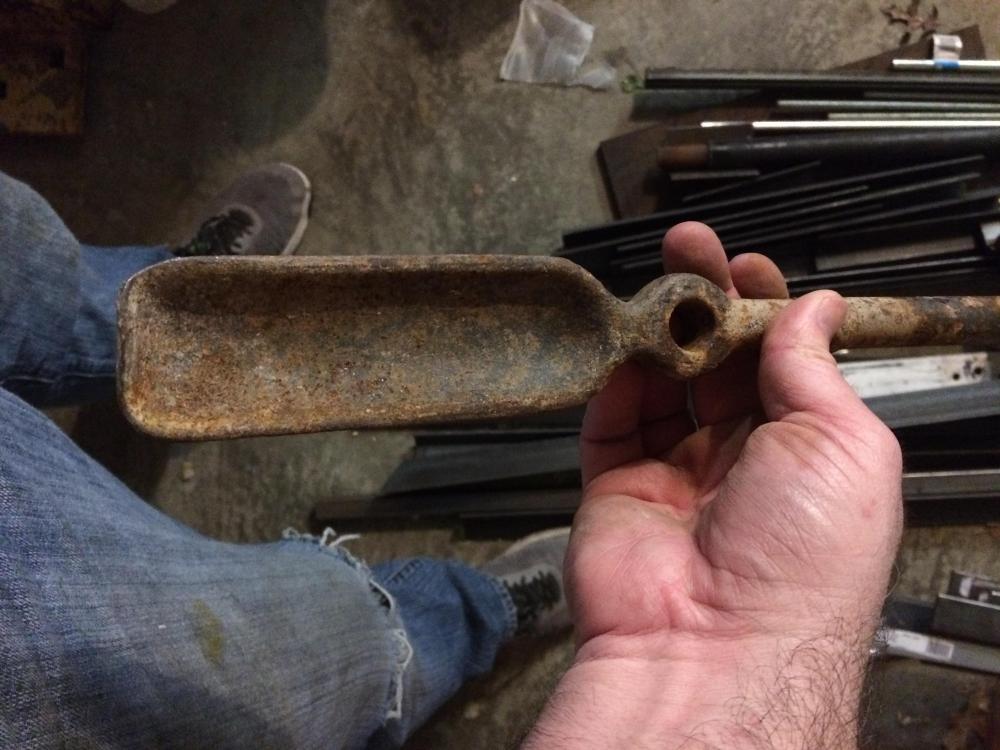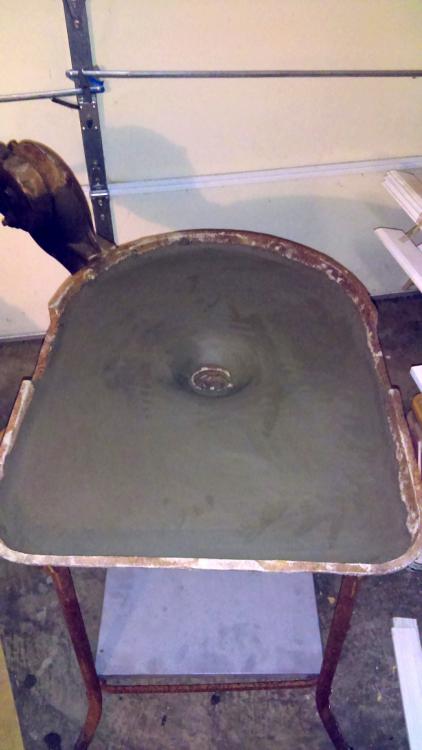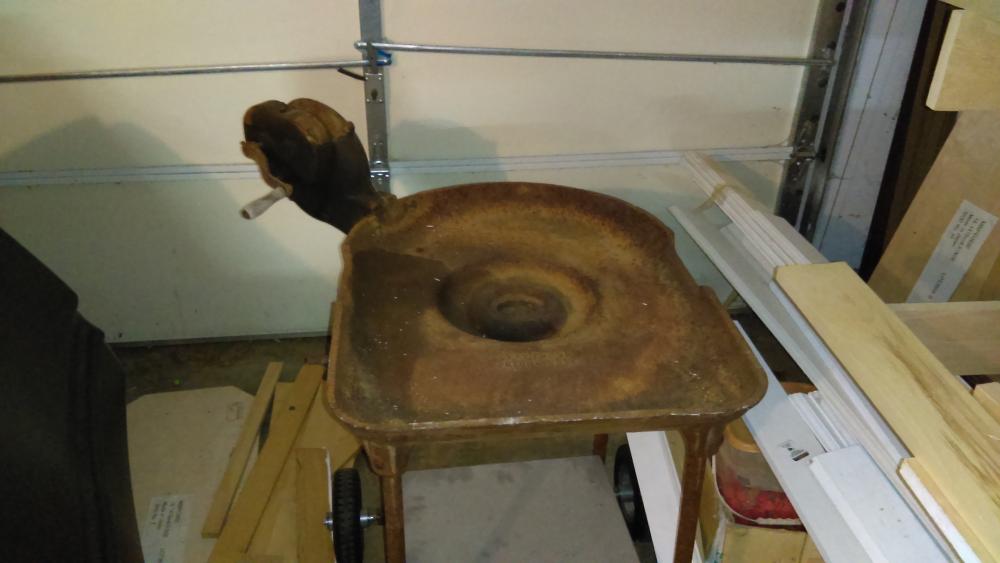
jwesthurl
Members-
Posts
14 -
Joined
-
Last visited
Profile Information
-
Gender
Male
-
Location
Saint Peters, Missouri
Recent Profile Visitors
The recent visitors block is disabled and is not being shown to other users.
-
Just trying to use what I have, LOL. I'll report back when I actually fire it up. It's been raining nonstop for days
-
Hi everyone, so armed with some great advice and the research by Charles, I converted my pan forge and blower to a side blast JABOD since I’ve been using only charcoal for forging. This is the forge with the original rammed clay in the pan-about 2 inches worth. I welded (term used loosely) up a “tuyere” to redirect the flow of air from the bottom of the ducks nest through the side of the forge. I then built a box from scrap and filled it with rammed earth consisting of kitty litter, wood ash and sawdust. I made my firepot a trench about 8 inches long and 4 inches wide. The 1 inch tuyere is about an inch from the floor and there’s 3 inches of earth above. This cost me roughly $4 for kitty litter and $1 for the elbow. Everything else was scrap. I’ll probably add a firebrick on the tuyere side to bank charcoal against above the hearth. Let me know what you think or if there’s something I can improve. Thanks!
-
Thank you gentlemen. Charles, is that hard firebrick?
-
Thanks, she actually decided she wanted to participate in a homeschool craft fair this past November, so we forged a bunch of small stuff for her to sell. She came up with the idea of a forged candy cane ornament and she and her sister forged a bunch of hooks from horseshoe nails and a bunch of little swords from duplex nails. We also made some horseshoe nail rings. She sold almost $200 worth of stuff at a 1 day craft fair! I'm pretty proud of her.
-
Fantastic! Thank you
-
Right, but is that too shallow for a charcoal fire? I was under the impression that a charcoal fire was supposed to be deeper and the stock should sit higher in the fire. Of course I can always just use clay or bricks to get the stock at the correct level once I modify the forge.
-
Thanks Charles, I can see this as a real possibility if I decide to stick with mainly charcoal but I want to be sure I'm understanding you. The hearth of the forge would just be flat and I would build two(?) mounds above the hearth, basically creating a trench between the mounds with the tuyere exiting from one of the mounds. Is this correct? How tall should the mounds be? Yes, thanks Frosty, by "fire pot" i meant the duck's nest created by the clay. You're looking at the forge after a year or more of use. I just scraped back the ash so you could see the forge better. If I use this method to convert it to side blast, do I just use bricks to contain the fire as well? How tall do I need the brick walls? I do have one more question about placing stock in a charcoal fire. I know the fireball and zones are different from a coal fire, so where should my stock rest in the fire? Thank you guys for the taking the time to answer!
-
My daughter and I were given this cast iron forge with champion blower after she got into blacksmithing. I clay lined it with the intention of using coal. We were lucky enough to spend a weekend with Lorelei Sims as our initial instruction in smithing and she taught us a good deal about fire management. HOWEVER, we live in the middle of a neighborhood and have only used charcoal. Obviously this forge isn’t ideal for charcoal and I’m wondering what would be the best way to modify it for charcoal use. We’ve actually used it quite a bit and it’s worked great but I know it can be better. My initial thought is to use firebricks to create a deeper and narrow fire pot but I’m not sure. Also, with charcoal, where do I want my piece to sit in the fire? I try to keep a good mound of charcoal in the shallow pot but I think it oxidizes too much at times. Thanks!
-
Makes sense! I’ve never seen one with a spade end before. Thanks!
-
I’m not sure if there’s a better spot for this question, but can anyone tell me what this is/what it’s used for? What kind of steel? These are on opposite ends of the rod and it’s 5-6 ft long. Thanks!
-
Thanks again Frosty! I am definitely going to score it. I agree that a working forge is really all that matters and my daughter is anxious to get going. I do have one last question: I've seen most people say to build a small fire in the forge after it has dried. What kind of fire (coal? wood?), how long should it burn and should it just be in the firepot? OK, I guess that was technically 3 questions.
-
OK, so my clay was a little more damp than I thought because when I tried to ram it, my mallet kept catching instead of bouncing off so I just tried punching it all down by hand then I smoothed it. I got the whole thing clayed to a depth of about an inch and the "duck's nest" is about 1.75" deep and 6 inches across at the top. How does this look? Is there anything else I should do? I was thinking of letting it dry overnight and trying to ram it again, should I do that? Thanks for the help and sorry for all the questions!
-
Thanks for the welcome Frosty! Yes, it does have clay before using stamped in the pan. I already have some clay mixed up ready to go, so I wanted to make sure I'm doing it right. Thanks!
-
Hi everybody, I've been a knifemaker for a couple of years and I decided to try my hand at forging plus my daughter is interested in learning as well. I got this forge from my uncle and I was wondering if I should remove the rust from the pan before claying it. It seems like the right thing to do but I didn't know if it was necessary. Thanks!
